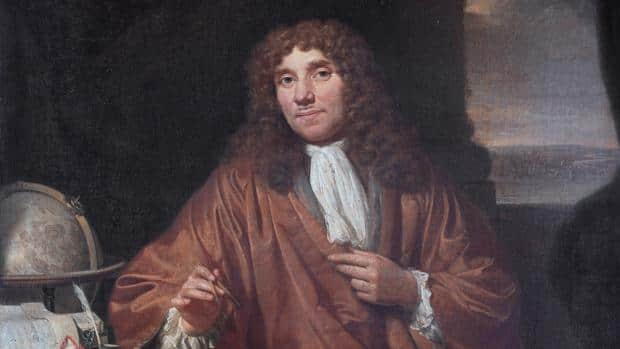 In 1595, in the Flemish city of Mildebourg, the optician Zacarias Janssen (1583-1638) assembled a small apparatus – it was barely twenty-five centimeters – with lenses in two brass tubes that slid one inside the other. In this rudimentary way he manufactured the first microscope in history.
In 1595, in the Flemish city of Mildebourg, the optician Zacarias Janssen (1583-1638) assembled a small apparatus – it was barely twenty-five centimeters – with lenses in two brass tubes that slid one inside the other. In this rudimentary way he manufactured the first microscope in history.
Several decades later, Antonie van Leeuwenhoek (1632-1723) was born in the Dutch town of Delft, a cloth merchant called to revolutionize the History of Science.
To be exact, his name was Thonis Philipszoon, but since he was born in a corner of the entrance to Delft, the so-called Lion's Gate, he was known as Van Leeuwenhoek, which in Dutch means "from the lion's corner."
Antonie perfectly harmonized the fabric trade with his numerous hobbies, among which one especially stood out, carving his own lenses from common glass, which he learned after regularly visiting the opticians in his hometown.
The Englishman who coined the word "cell"
Thanks to this knowledge, he managed to carve a three-fold magnifying glass that helped him see the rows of threads in the fabrics he sold in his store and improve the quality of the fabrics.
At that time, the English scientist Robert Hooke (1635-1703) lived in that city, who combined his duties as Pastor of the New Church of Delft with his microscopic and telescopic observations.
It was precisely this character who designed a microscope – based on the one manufactured by Janssen – with which he was able to distinguish different stages of the development of ants, some anatomical structures of fleas and sporangia of the fungus of the genus Mucor.
In 1665 Hooke published a book titled "Micrographia" with drawings of the images seen by him through the microscope and where the word "cell" appears for the first time, a word with which he referred to some cells that were in a sheet of cork.
Leeuwenhoek was inspired by the work of the English scientist to carve a small lens – between three and four millimeters in diameter – with which he managed to magnify the images ten times and assemble them in the hole in the upper part of a metal stage.
The first person to see bacteria
The draper was amazed to see tiny living beings move – perhaps we should say wriggle – in a drop of rainwater collected in a jar. After showing his observations to his daughter María, he named his discovery "animalcules."
During the following days he dedicated himself to drawing with all kinds of details the ciliates, rotifers, flagellates, euglenas and algae that he observed through his microscope.
The Dutch merchant then reported his findings to the Royal Society of London, the most important scientific institution in Europe at the time. He did it with enormous prudence and humility, as can be seen from reading the letter he sent them:
"If your honor believes that these observations may upset or scandalize scholars, I strongly request your honor to consider them private and publish or destroy them as you see fit."
Of the fifty microscopes that Leeuwenhoek manufactured throughout his life, unfortunately, barely a dozen remain. They are pieces of brass and silver with lenses between sixty-eight and more than two hundred magnifications.
M. Jara
Pedro Gargantilla is an internist at the El Escorial Hospital (Madrid) and author of several popular books.
